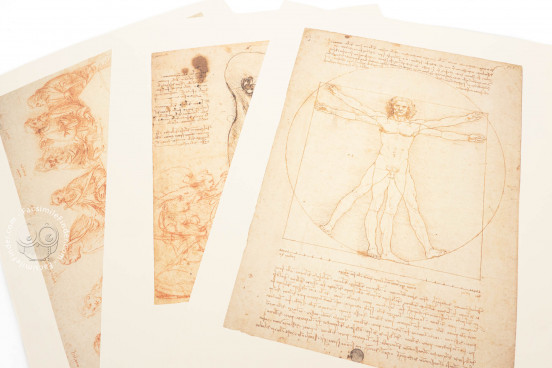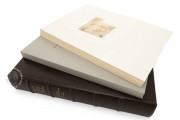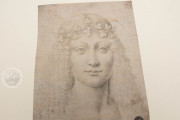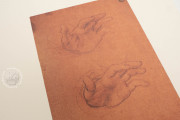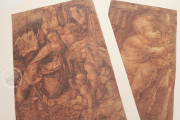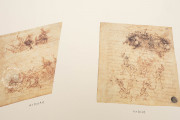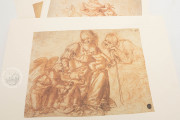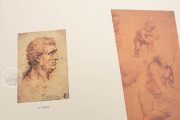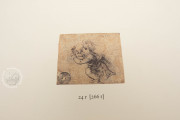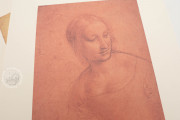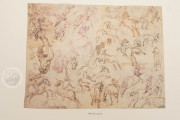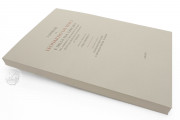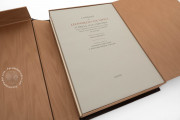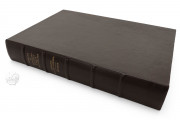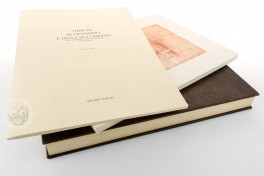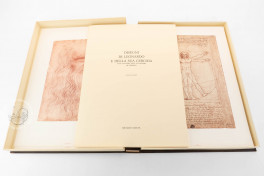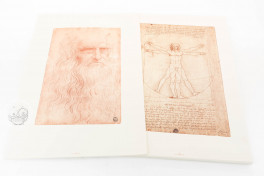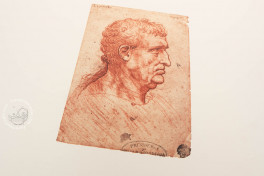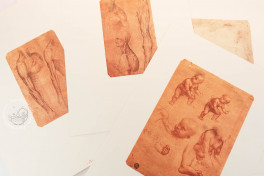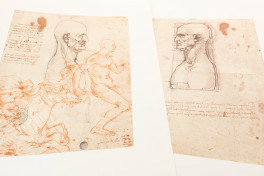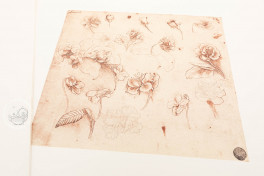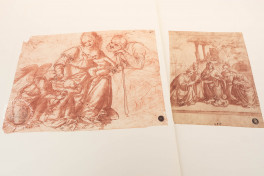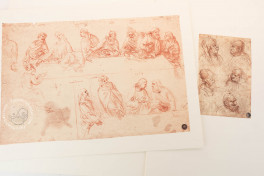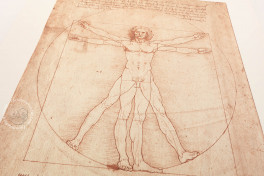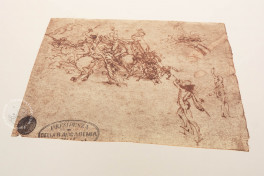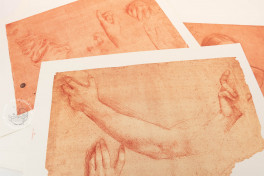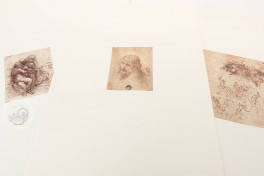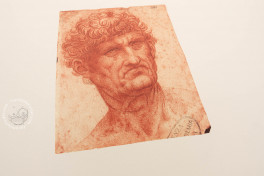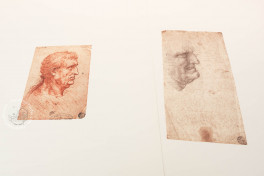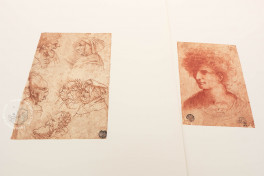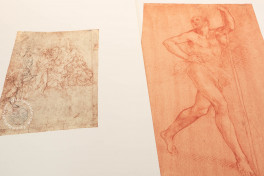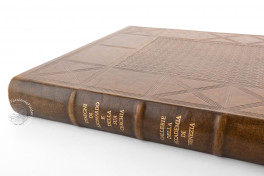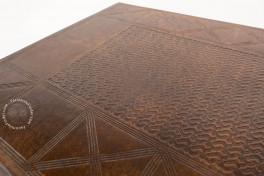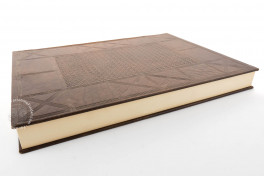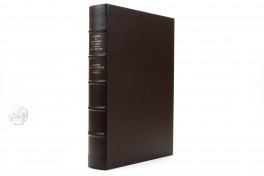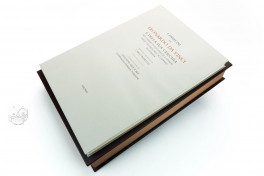The collection presents seventy-two plates featuring the reproduction of drawings by Leonardo da Vinci and his circle in Venice's Gallerie dell'Accademia. This prestigious series of drawings, displaying a rich variety of themes and techniques, is an inspiring synthesis of the multifaceted aspects of Leonardo's artistic and scientific works viewed in both their theoretical and practical applications.
This exquisite compilation includes twenty-six works by da Vinci (among which are some of his revolutionary works, such as the acclaimed Vitruvian Man and the probable self-portrait known as Portrait of a Man in Red Chalk), thirty-three by his disciples, and thirteen by other artists. The diverse range of subjects and techniques on display underscores the graphic magnificence of Leonardo's oeuvre, making it possible to trace the pivotal stages of his artistic life and legacy.
Leonardo's Studies for The Battle of Anghiari
Among the drawings confidently attributed to Leonardo, there are some beautiful studies for The Battle of Anghiari. In one of these, depicted at the top is the fury of the melee becoming almost like a wave that engulfs everything, from which emerges the desperate arm of a warrior wielding a blunt weapon, almost as a defense before sinking overwhelmed. In the lower part of the drawing, the studies of bodies in dynamic positions are a clear testimony to Leonardo's scientific interests. Another study, also related to The Battle of Anghiari, suggests the landscape with a few strokes, outlined according to a diagonal that leads to conjecture spaces beyond those represented, in a method typical of Leonardo.
Another significant drawing by Leonardo himself represents three dancing female figures. Dating back to the artist's mature years, the drawing is particularly remarkable since it bears witness to the artist's adherence to the emerging Mannerism. See in particular the rendition of the garments, draped as if moved by an ideal wind.
From Late Gothic to Mannerism
Among the authors of the drawings attributed to Leonardo's circle, names such as Ambrogio de Predis, Giovanni Antonio Boltraffio, Francisco Napoletano, Marco da Oggiono, Giampietrino, Agostino da Vaprio, Andrea Solario, Cesare da Sesto, and Francesco Melzi stand out. In particular, Cesare da Sesto, one of the most significant Lombard masters active in the Leonardo sphere, is the author of a parchment drawing for the Adoration of the Magi that is emblematic of the transition from the late Gothic world to Mannerism, particularly evident in the composition's manner of grouping figures.
This shift to Mannerism is even more evident in another drawing by Cesare da Sesto, which is also related to the Adoration of the Magi in the Capodimonte Museum in Naples. Here, a dialectical relationship is created and resolved on a graphic level through diagonal hatching that leads from the group of bystanders to the horse rearing on its hind legs, imposing a reading of the scene according to a diagonal layout that has definitively abandoned the symmetrical search typical of the early Renaissance.
We have 2 facsimiles of the manuscript "Drawings by Leonardo da Vinci and His Circle - Gallerie dell'Accademia (Collection)":
- Disegni di Leonardo e della sua cerchia alle Gallerie dell'Accademia di Venezia facsimile edition published by Electa, 1980
- I disegni di Leonardo da Vinci e della sua cerchia - Gallerie dell’Accademia di Venezia facsimile edition published by Giunti Editore, 2003

